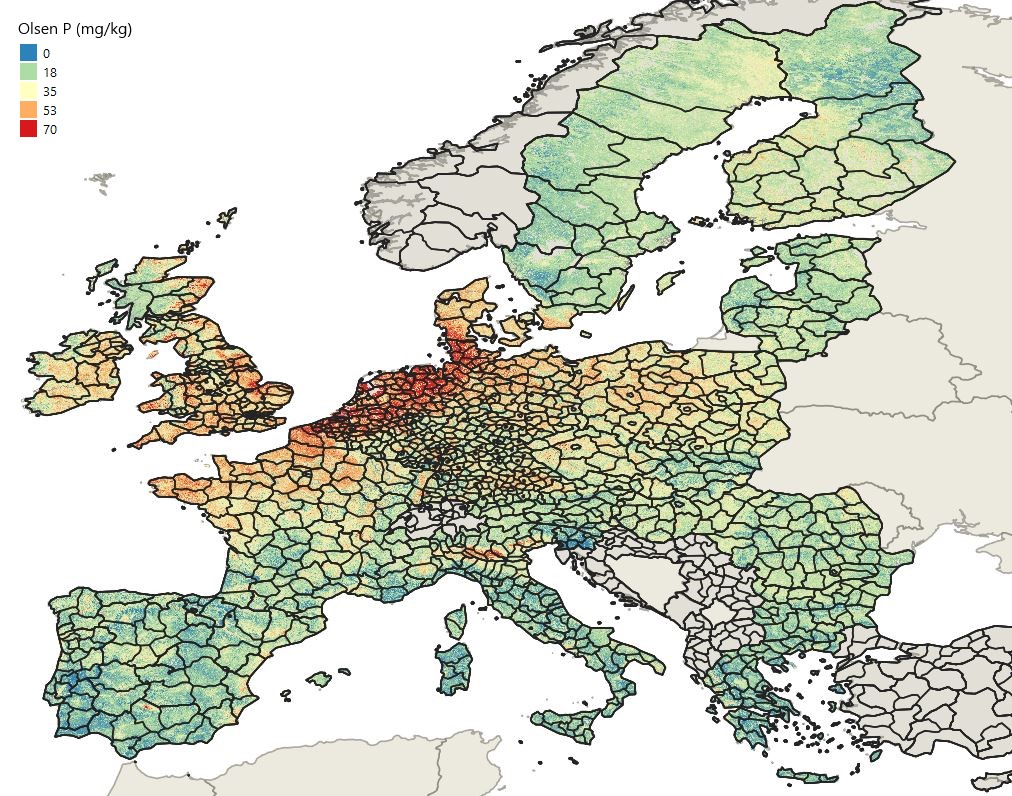Modelling the environmental impact of bio-based phosphorus fertilizers in European regions
ESR-12 Maja Rydgård

Figure.1. Soil P content as measured with the Olsen-P method (mg/kg) in the LUCAS topsoil survey. Region borders indicate the NUTS3 regions.
Phosphorus (P) is an essential nutrient required for crop growth, which is currently obtained mainly through rock mining. Rock P is a limited resource, and thus the recycling of phosphorus in waste-streams is essential to secure the future supply of P to agriculture. Bio-based fertilizers can contribute to the substitution of conventional rock-P fertilizers, but may also give rise to emissions to the environment. To assess the environmental impacts of using bio-based P fertilizers in Denmark, the PLCI model was developed by ten Hoeve et al (2016). In the FertiCycle project, there is now an ongoing work by Maja Rydgård (ESR12) and colleagues at Copenhagen University and Wageningen University to further develop this model to be applicable to European regions.
The aim is to provide a model that can be used to estimate inventory factors to be used in Life Cycle Assessments (LCA) on bio-based P fertilizers. One inventory factor is the substitution factor, which describes how much conventional rock-P fertilizer can be substituted with the bio-based alternative. Another inventory factor is the P loss factor, describing the losses of P to the environment.
In the development of the model, the work includes estimation of regional factors describing parameters that affect the fluxes of P and the emissions to the environment. Examples of such factors are soil P content, soil erosion and plant P offtake. The estimations are made for arable land for the European NUTS3 regions (Nomenclature of Territorial Units for Statistics level 3), using datasets from the European Soil Data Centre (ESDAC). The NUTS3 region borders can be seen in the figure, which also shows the soil P content as measured with the Olsen P method in the LUCAS topsoil survey (Ballabio et al. 2019), as an example of input data to the new PLCI model under development.
References:
Ballabio, C., Lugato, E., Fernández-Ugalde, O., et al. Mapping LUCAS topsoil chemical properties at European scale using Gaussian process regression. Geoderma, 355: 113912 (2019). https://doi.org/10.1016/j.geoderma.2019.113912
European Soil Data Centre (ESDAC), esdac.jrc.ec.europa.eu, European Commission, Joint Research Centre
ten Hoeve, M., Bruun, S., Naroznova, I. et al. Life cycle inventory modeling of phosphorus substitution, losses and crop uptake after land application of organic waste products. Int J Life Cycle Assess 23, 1950–1965 (2018). https://doi.org/10.1007/s11367-017-1421-9
